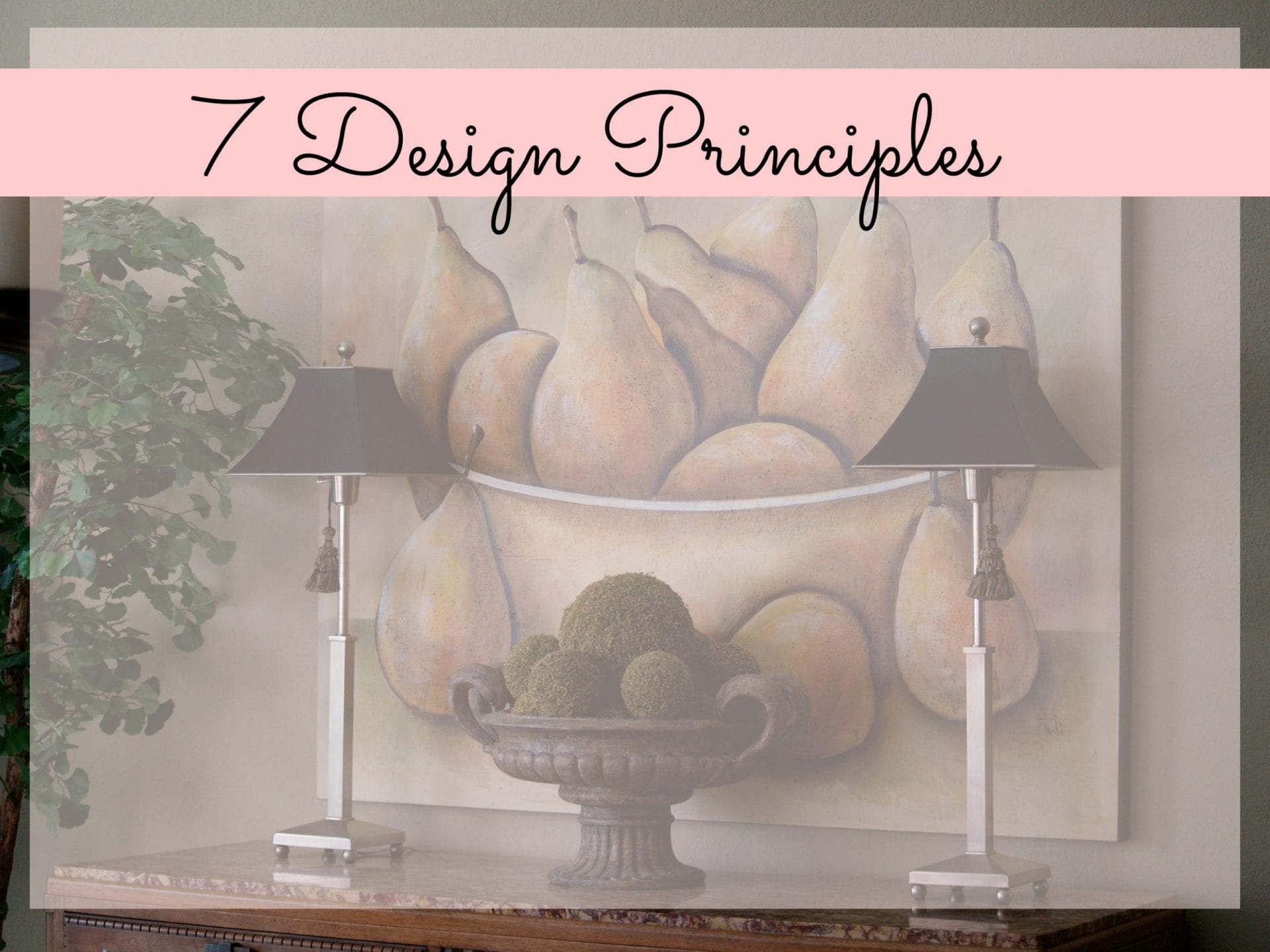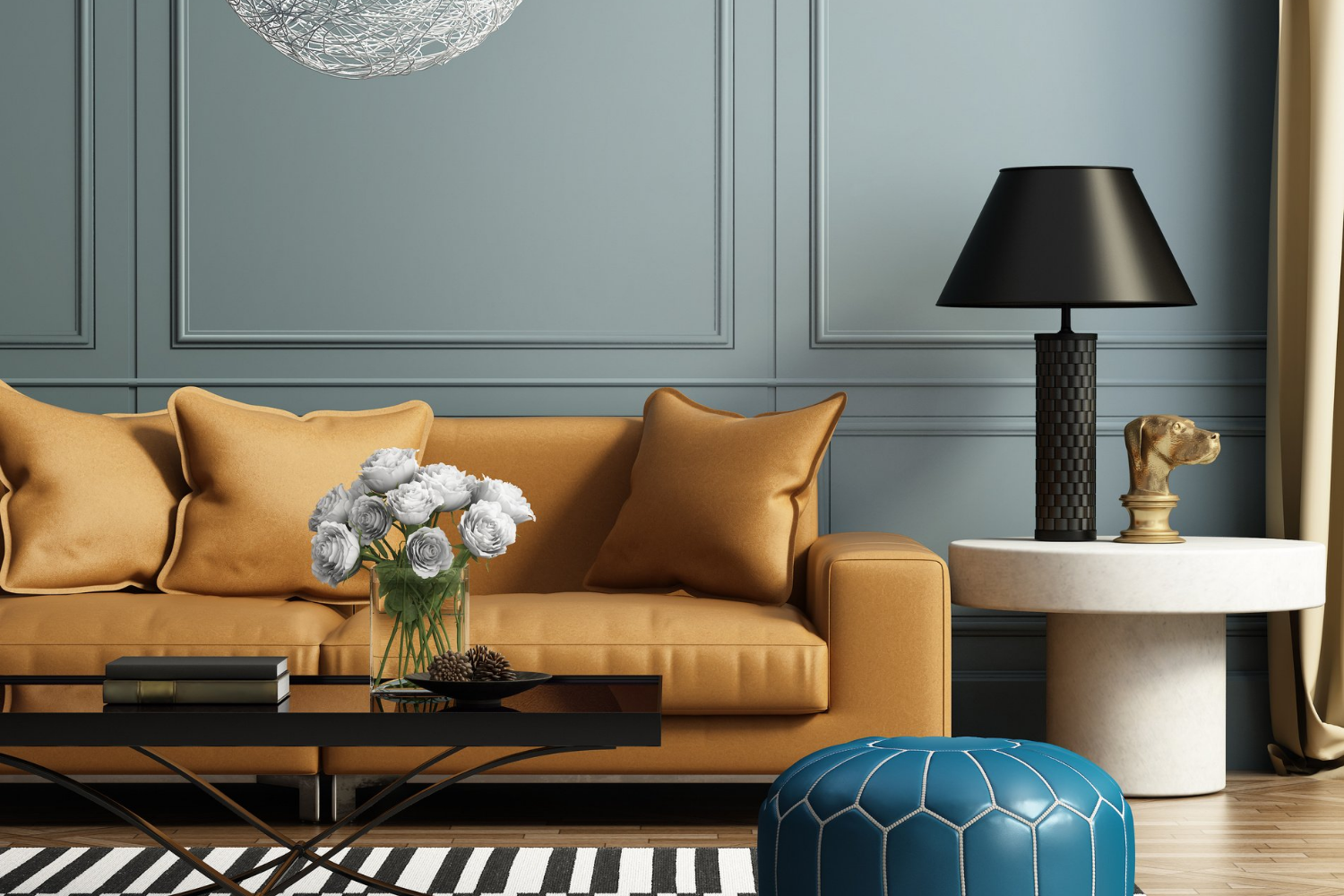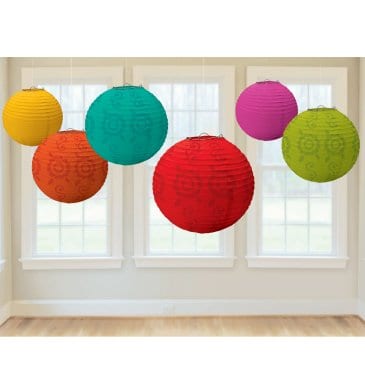Don’t Miss These 7 Simple Design Principles! These are not something I made up and these are NOT limited to Interior Design Projects. These principles can be applied to any type of design you might do…

The word ‘design’ is multifaceted. It can refer to plans, proposals or creative endeavors. Design surrounds us in every area of our life in one way or another – i.e. our homes, buildings, city planning, cars, art, theater, clothing, and even food has a design element… the presentation.
Design makes everything functional, appealing and attractive. It has aesthetic aspects such as inspiration and creativity, as well as scientific aspects like research and function.
The same set of principles of design are used no matter whether one is considering interiors, architecture, cars, city planning grids or websites. Although some areas are more scientific in nature and others are more artisitc, the principles are still the same no matter what one is designing.
1. UNITY & HARMONY
Think of the room, the house or a building, in it’s totality. Consider a series of spaces linked together by halls and stairways. A common style and theme throughout the space creates unity and harmony.
2. FOCAL POINT
A well-designed room always (depending on it’s size) has one or more focal points. A focal point is an element or feature in a room that is prominent enough to draw the attention of the viewer.
3. BALANCE
Balance can best be described as the equal distribution of visual weight in a room. Symmetrical balance is where two or more objects are repeated. For example – two wall sconces on either side of a piece of art.
4. PROPORTION
Proportion refers to the the size of an item or items when measured against other elements in a room.
5. RHYTHM
In musical terms we would describe rhythm as the beat of the music. In interior design, rhythm is all about repetition. Visual rhythm and repetition creates movement in a room.
6. COLOR
Color tends to inspire emotion in people the most and can therefore have the greatest impact in a room, even beyond other considerations.
7. DETAIL
Details are very important and oftentimes can make or break the design of a room. Everything from the trim on a lamp shade, the color of the piping on the pillows, to the cabinet knobs all need consideration. Unlike color, some find dealing with the details to be boring. But it’s the attention to detail that can take a room from good to great!
Although the term ‘design’ straddles both the scientific and creative worlds, it’s the design, like a potter’s wheel, that provides the shape, beauty and function for extraordinary living! Contact your interior designer today if you find any of these principles missing from your home.







